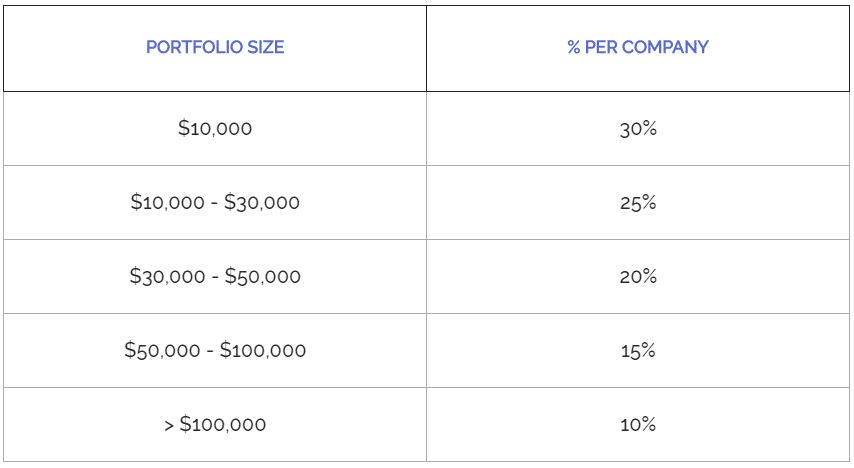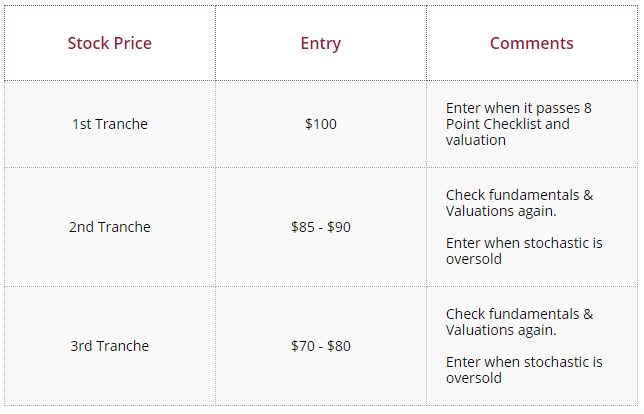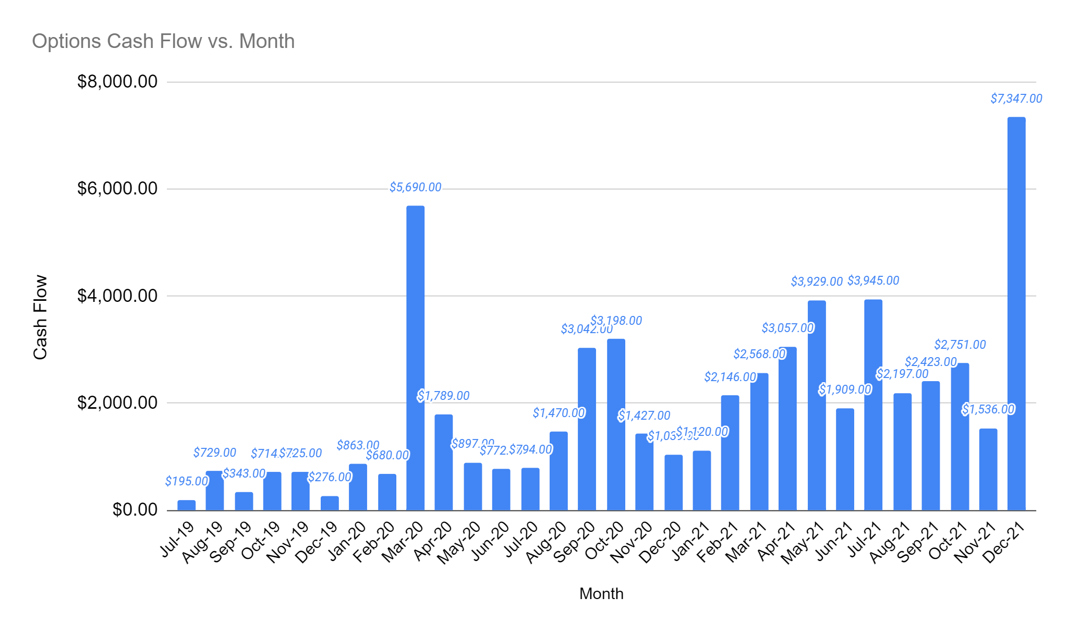As investors, we know that stock market downturns are one of the best opportunities to build our wealth.
After all, the big money is not made in the bull markets, but rather the actions and decisions we took before the bull markets happen.
However, there is always one problem.
Stock market downturns can only benefit those who actually have the cash to take advantage of these opportunities. Those without cash, unfortunately, cannot buy more to average down on their purchase price.
In this article, I want to share a few ways that I personally use so that I always have cash to take advantage of these opportunities - some of which are quite unorthodox, so do your own due diligence 🙂
1. Constant Contribution To Portfolio
This is the most straightforward method, which I have mentioned plenty of times.
But yet, I find myself repeating it over and over again, because I don't see many people doing it.
If you are one of them who still have yet to constantly add monthly contribution to your brokerage account - carefully evaluate your own finance. Do you think that the money is better left in the bank?
One of my friends once asked me, how much money should I leave in the bank?
My answer? "As Little As Practically Possible".
The answer was fairly straightforward once we adopt a long term view of the returns of the stock market over the bank returns of 0.05% per annum.

In short, it is silly to leave money in the bank, earning a puny 0.05% per annum. The banks will simply take your money and lend them to someone else and earn the difference in interest.
Personally, I set aside 40% of my income into my brokerage account and survive on the remaining 60%. Of course, this percentage is dependent on your own living expenses. I live an ultra simple life and have yet to have kids yet, and so I can afford to do so.
But no matter what your circumstances is, make it a point to commit a percentage of your income to your brokerage account. This could be 10%, 20% or even 60% depending on your financial situation.
2. Portfolio Management
When investing, I adopt the three tranches strategy. This means that I do not invest my entire allocation of money into a single company at one go.
In fact, this is the guideline that I used for the maximum I could allocate for each company.

Let's take the $10,000 portfolio for an example - I would allocate ~ $3000 for each company.
Within this $3,000, I will split it into three entries of $1000 each. So let's say my first entry was at $100 - my subsequent tranche will be kicked in when the price has fallen 10 - 15% from my purchase price.

As with any investment, I only buy stocks that passes my 8-Point checklist and it is actually undervalued. These are the criteria which increases the odd of my portfolio performing in the long run, and more importantly, give me the courage to add my subsequent tranches as share price falls.
This is especially so during the company's earnings where share price can plunge drastically. While others may sell out of fear, I will be happily buying more.
Always remember, if you are selling your shares out of fear, ask yourself, who exactly is buying your shares? and why are these people buying your shares? It is because the people who buy your shares are likely long term investors taking advantage of people who are panic selling.
Entering in tranches has been a strategy which also allowed me to have cash to enter more into my stocks during downturns.
Now, let's talk about something more in depth - options.
3. Selling Weekly Options
Some of have probably noticed a flaw with the tranches strategy. After entering the first tranche, if the share price constantly goes up, I wouldn't have the opportunity to use the cash I have set aside for the subsequent tranches.
This is a cardinal sin - leaving cash lying around doing nothing.
So what do I do then? Well, I typically use this cash for selling cash-secured put options or buying call options.
Let's focus on selling put options since we are talking about cash flow in this article.
When I see that I have a surplus cash in my portfolio that hasn't been used to buy stocks yet - I sell cash-secured put options and promise to buy qualified companies at undervalued strike prices. Most of times, these put options are not exercised, in other words, I simply keep the option premium that I have collected.
Now, what if the put option does get exercised? Well, I will have to buy 100 shares of the underlying company at the selected strike price.
Having 100 shares is a magical number.
It allows me to sell call options on these stocks and getting money every week over and over again.
In other words, selling weekly options allowed me collect cash flow over and over again and eventually used them to buy more stocks.
In fact, the whole idea of me building my portfolio is so that eventually I build a portfolio that is big enough, such that just by selling weekly options alone can already sustain my lifestyle.
Currently, as for last year, this were my results from selling options.

You can see that as your portfolio gets bigger and bigger, it becomes natural to collect even more cash flow for you to keep compounding your returns.
4. Selling Long Term Put Options
This was something that I learned from a multi-millionaire investor.
(As usual, if you want to learn something, get advice from someone who is already successful)
This is why I discovered how I could buy stocks for free.
Yes - you read that right. Buying stocks without any of my own cash.

Let me dissect the above trades for you, which I have done on 2 Feb 22.
Firstly, I sell a put option at an expiry of 19 Jan 24 which is two years from then. From this sell put option, I collected $2,625.
I used this same $2,625 to buy 20 shares at the current share price of $131.95.
From end-to-end, you realised that I didn't use any of my own cash at all. I simply used the cash which I collected from my long term expiry put option.
Now, the explanation.
The time I did this trade was when PYPL fell by 20+% in a single day after a poor earnings guidance. When this happened, it was obvious everyone was scared and panicky. When there is fear in the market, market volatility shoots up, and selling put options will collect a ton of premium. In this case, I collected well over $2600 of option premium.
Now, I intentionally choose a long expiry date of 2 years. Why such a long term expiry date? Well, firstly, the longer the expiry date, the more option premium I will collect. Secondly, when I sell a put option, it means that I promise to buy 100 shares of PYPL at $130, which is $13,000. However, I only need to pay this $13,000 if the price of PYPL is below $130 at the end of the two years expiry.
As an investor, we know that the stock market in the short term is a betting machine, but in the long term, it is a weighing machine. By the end of two years, it is likely that PYPL has already recovered. This is of course, based on the evaluation of the fundamentals of the company. Please don't ever use this strategy for a poor quality company - which is why the 8-point checklist is so important.
"Gin, I don't have $13,000 - can I do something like this?"
Well, at this stage, I want to introduce something called maintenance requirement.
Once the sell put has been done, it will impose a maintenance margin represents the amount of equity the investor must maintain in the margin account. If the equity ever go below the maintenance requirement, then the broker will issue a margin call and force close your positions.
Sounds scary, isn't it?
Well, you have two options - 1) don't execute this strategy at all unless you have $13,000 or 2) learn how to manage the risk.
Personally, I have done such positions for multiple other stocks and gotten free stocks along the way. One thing that I pay attention is that my maintenance requirement must be less than 50% of my equity.
If you don't know what is your maintainance requirement, refer to the following video on how you see it on ThinkorSwim.
In short, with my portfolio of $200,000 - my maintenance requirement should be no more than $100,000. This helps to protect me from a margin call and end up wiping my positions.
In any case, if you choose to execute this - please do your own due diligence and also only do it for fundamentally good stocks.
The Bottom Line
These are the strategies that I used to ensure that I always have cash to take advantage of stock market downturns. And you will realise that as your portfolio gets bigger and bigger, it is much easier to use options to create cash flow, which is why the first step of constant contribution to your brokerage account is so important.
I cannot emphasize this enough, I hate leaving money in the bank. I think it is silly, especially when we take the long term view of the stock market.
Whatever strategy that you do, always keep in mind to invest only in fundamentally good companies. For myself, I only invest in qualified companies that pass my 8-point checklist.
If you like to find out more about qualified companies, check out my recorded training below:

The "Qualified Stocks" Training
What an engineer did to grow his portfolio from $7,137.68 to $194,383.30 in just 4 years using qualified stocks...so that WORKING AT A JOB was A CHOICE AND NOT A necessity...
